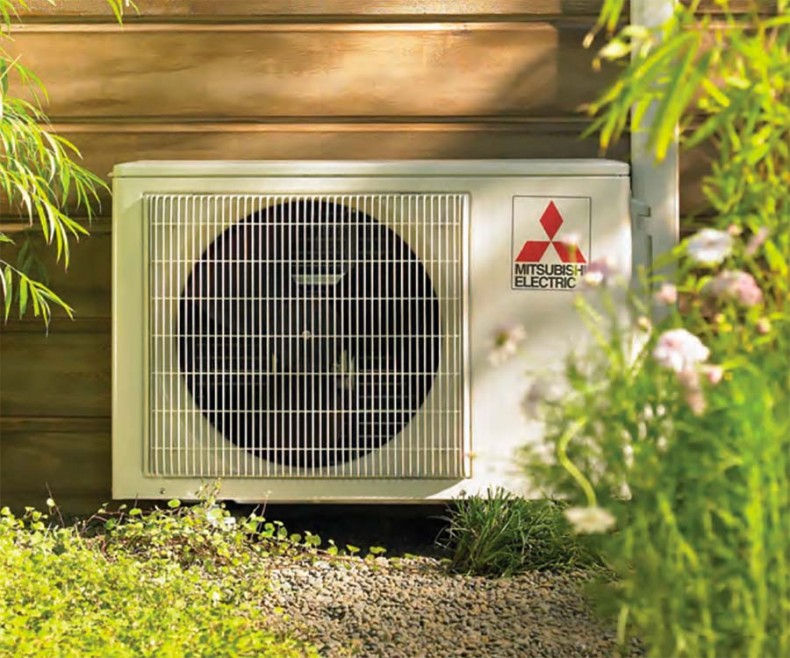Improving Energy Efficiency with ‘Mini-Splits’
Going ductless in a manufactured home
By Brian SlobodaDHPs consist of a separate outside compressor and one or more inside air-handling units.
Manufactured homes, sometimes dubbed mobile homes, often log disproportionately higher energy bills than traditional wood-frame or modular homes. Fortunately, there are steps you can take to help manage the energy costs of manufactured homes.
Manufactured homes come in several configurations: Single-wide, double-wide and triple-wide. Double-wides and triple-wides require a crossover duct to provide airflow between the sections — a major culprit in air leaks that contribute significantly to wasted energy.
Quality of life for most manufactured home owners suffers due to the prevalence of leaky ducts, resulting in poorly cooled and heated living spaces.
Manufactured home residents with ducted heating, ventilating and air conditioning (HVAC) systems may find the indoor temperature in their homes uncomfortable or unmanageable, especially in hot and cold seasons.
Inefficient heating and cooling systems in manufactured homes have also been shown to negatively impact indoor air quality, important health factors and safety. For instance, poorly ducted HVAC systems in manufactured homes located in warm, humid areas can cause severe mold, mildew and floor buckling.
Evidence suggests that retrofitting manufactured homes with a ductless heat pump (DHP) could improve energy efficiency and reduce heating and cooling loads. DHPs do not require ductwork to deliver conditioned air to the home. DHPs also are called “mini-split” heat pumps: “Mini” because they are suitable for conditioning smaller areas, and “split” because they consist of a separate outside compressor and one or more inside air-handling units.
A complete DHP system includes the following main components:
- An outdoor compressor unit;
- One or more indoor air handling units mounted on a wall or ceiling;
- Refrigerant line(s) — insulated copper tubing — running from the compressor to the air handling unit(s), generally running along the outside of a wall; and
- A handheld wireless remote or wall-mounted control unit with a programmable thermostat.
A 2012 study funded by the Bonneville Power Administration found that DHPs in manufactured homes use an average of 39 percent less energy for heating than the electric forced air furnaces they replaced. On average, manufactured homes retrofitted with DHPs saved 4,147 kilowatt hours (kWh) per year in heating electricity and 6,022 kWh per year in overall electricity use, demonstrating an average overall load reduction of 30 percent. The study also found that DHPs on average saved nearly twice as much heating kWh in manufactured homes than in single-family homes.
More options
There isn’t a magic bullet to lower the energy consumption of a manufactured home. It takes time and hard work to troubleshoot all possible causes of energy loss, and your electric cooperative can help find solutions that make sense for a specific situation. For example, other ways to improve efficiency include:
- Verifying belly board integrity;
- Identifying air leakage/infiltration;
- Sealing crossover ducts;
- Adding insulation and insulating ductwork; or
- Replacing single-glazed windows and uninsulated doors.
DHPs can provide long-term solutions to lowering energy purchases. However, other options also exist. Savings of up to 50 percent have been reported in manufactured homes that have been properly sealed and had electric furnaces replaced with new electric heat pumps. The key is to start hunting for the savings lurking underneath and inside your manufactured home.
-
Share this story:




